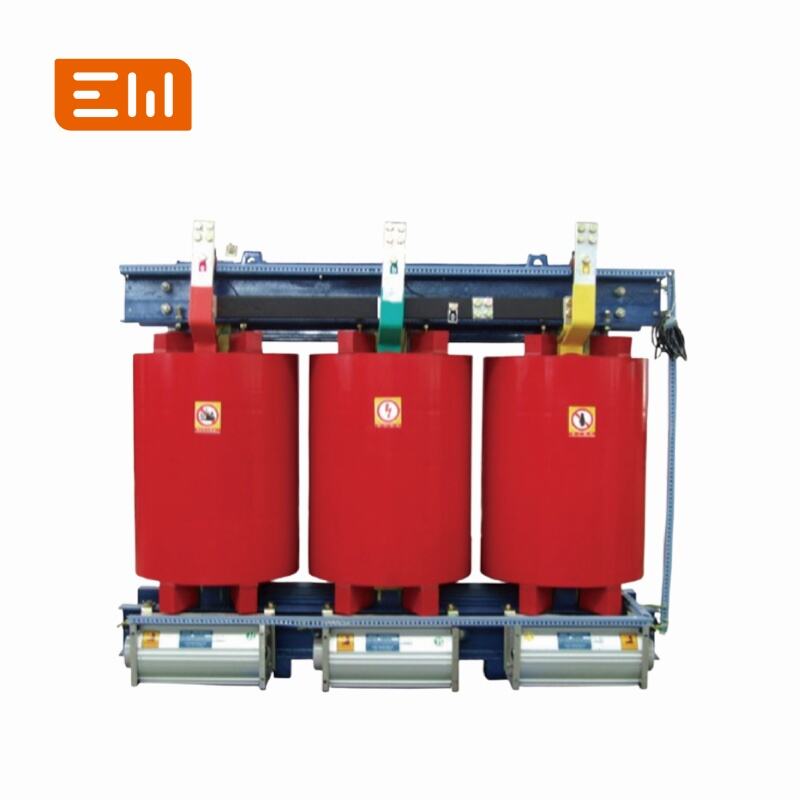Factors That Influence the Price of a Dry Type Transformer
When budgeting for an electrical project, understanding the cost of major components is essential. For a dry type transformer, the price can vary significantly based on a number of key technical specifications and features. It is not just a single product with a single price, but a highly configurable piece of equipment.
This guide breaks down the primary factors that influence the final price of a dry type transformer, helping you understand what drives the cost and where you can make choices to fit your budget.

1. kVA Rating (Size)
This is the single biggest driver of cost. The kVA (kilovolt-ampere) rating represents the transformer's power capacity. A larger kVA rating means a physically larger transformer with more copper or aluminum in its windings and a larger core. The relationship is straightforward: the higher the kVA, the higher the price. A 1000 kVA transformer will be substantially more expensive than a 100 kVA unit.
2. Voltage Ratings (Primary and Secondary)
The voltage class of the transformer has a significant impact on price. A transformer designed to handle a higher primary voltage (e.g., 35kV) requires more insulation, greater internal clearances, and more robust components than a transformer for a lower voltage (e.g., 15kV). Therefore, higher voltage ratings lead to a higher price, even for the same kVA size.
3. Core Material: Amorphous Alloy vs. Silicon Steel
The material used for the transformer's core directly affects both its price and its long-term operational cost.
- Standard Silicon Steel: This is the traditional core material used in models like the SCB10 series. It offers excellent performance at a lower initial cost.
- Amorphous Alloy: This advanced material, used in the SCBH15 series, is more expensive to produce. However, it drastically reduces no-load losses, leading to significant energy savings over the transformer's life.
The initial price of an amorphous core transformer is higher, but it can offer a lower total cost of ownership (TCO) for applications with light or variable loads.
4. Winding Material: Copper vs. Aluminum
The conductor material used for the windings is another major cost factor.
- Copper: Copper is a superior conductor and is more efficient, allowing for a slightly smaller transformer. However, it is significantly more expensive than aluminum.
- Aluminum: Aluminum is lighter and less expensive. To achieve the same efficiency as copper, aluminum windings need to be larger.
While both are reliable, copper-wound transformers have a higher upfront cost due to the raw material price.
5. Enclosure Type and IP Rating
The transformer's housing affects the price. A simple, standard indoor enclosure (e.g., IP21) is the baseline. As the need for protection increases, so does the cost. Enclosures with higher IP ratings (like IP23 or IP44) for outdoor or dusty environments, or those made from stainless steel for corrosive environments, will add to the final price.
6. Optional Features and Accessories
A base-model transformer can be customized with a range of accessories, each adding to the cost:
- Forced Air (AF) Cooling Fans: To increase the kVA rating for overload situations.
- Temperature Monitoring: Digital temperature monitors with alarms and trips.
- Special Paint or Finishes: For specific aesthetic or environmental requirements.
- Anti-Vibration Pads: To reduce operational noise.
- Custom Busbar Connections: To match specific switchgear configurations.
Conclusion: Balancing Cost and Performance
The price of a dry type transformer is not arbitrary; it is a direct reflection of the materials, engineering, and features that go into its construction. While it may be tempting to select the lowest-cost option, it is crucial to consider the long-term implications.
Investing in a higher-efficiency core, for example, may cost more upfront but save you multiples of that initial investment in energy costs over 20 years. Similarly, choosing the right enclosure and winding material ensures the transformer will have a long, reliable life, avoiding the high cost of premature replacement.
The best approach is to define your technical requirements clearly and then explore the options. The team at https://www.enweielectric.com/contact-us">Enwei Electric is skilled at helping customers balance performance and budget to find the most cost-effective, long-term solution for their projects.
Table of Contents
- Factors That Influence the Price of a Dry Type Transformer
- 1. kVA Rating (Size)
- 2. Voltage Ratings (Primary and Secondary)
- 3. Core Material: Amorphous Alloy vs. Silicon Steel
- 4. Winding Material: Copper vs. Aluminum
- 5. Enclosure Type and IP Rating
- 6. Optional Features and Accessories
- Conclusion: Balancing Cost and Performance

